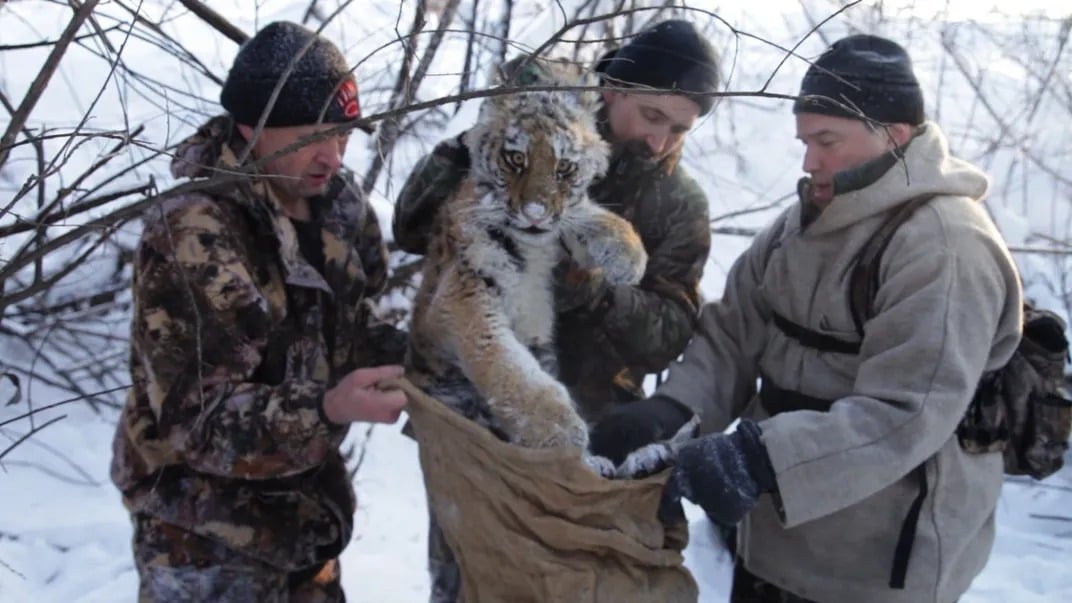From Orphans To Soulmates — The Heartwarming Tale Of Two Amur Tigers
Language
Reading Level
Listen to Article
Alignment

Boris and Svetlaya, a pair of rescued Amur tigers in Siberia, Russia, have reunited as mates after being separated for more than a year and over 100 miles. Their heartwarming love story began in 2014 when they were just cubs, brought together by fate.
The unrelated orphans were between 3 and 5 months old when they were rescued and taken to the same conservation center in Siberia. Here, the cubs were raised with minimal human contact and in an environment that resembled the wild. To help develop their natural hunting instincts, the tigers were given live prey, like rabbits and pheasants.
At 18 months old, the two were released back into their natural habitat in the Sikhote-Alin mountain area. However, the tigers were placed in separate areas over 100 miles (160 km) apart. This was to help spread the population of the endangered species over a wider area.

Wildlife Conservation Society (WCF) researchers closely monitored Boris and Svetlaya to ensure their well-being. A year after their release, they noticed Boris walking north in a nearly straight line toward where Svetlaya had settled. To their delight, the two reunited. Six months later, Svetlaya gave birth to a litter of healthy cubs.
The scientists published their findings in the Journal of Wildlife Management in November 2024. They note that this strategy of using released rescue cats to restore tiger populations in the wild has never been tried. However, Boris and Svetlaya’s success could make it a viable option.
This is not the conservation center's first tiger-related love story. A few years ago, another rescued tiger named Zolushka ("Cinderella" in Russian) was released into the wild. Shortly after, an unknown male tiger appeared and swept her off her feet. They, too, produced a litter of healthy cubs.
“Cinderella’s prince showed up, and they lived happily ever after,” said Dale Miquelle, lead tiger scientist for the WCS.

Amur tigers, or Siberian tigers, are the largest of all tiger subspecies. They are native to the forests of eastern Russia and parts of China. Known for their thick, pale orange coats with dark stripes, these big cats blend seamlessly into snowy landscapes and can survive temperatures as low as -50°F (-46°C). The solitary hunters cover large areas searching for prey, like deer and wild boar. Amur tigers were once on the brink of extinction due to poaching and habitat loss. However, thanks to ongoing conservation efforts, their numbers have increased to about 500 in the wild. While the tigers remain endangered, there is renewed hope that the species can be preserved.
Resources: Smithsonianmag.com, conservewildcats.org, zmescience.com